Shevlin Sebastian's Blog, page 87
August 2, 2016
Too Much Going On Too Fast
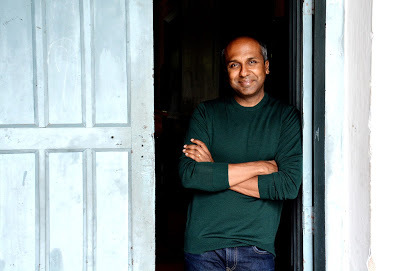
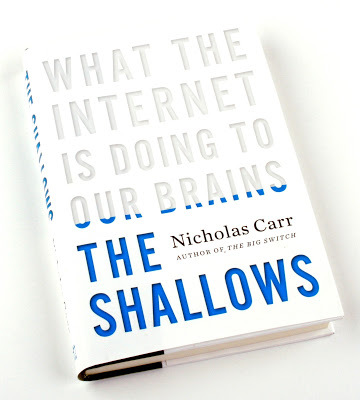 The Chief Digital Officer of New York City, Sreenath ('Sree') Sreenivasan talks about digital trends in India and abroad, while on a recent visit to Kochi
The Chief Digital Officer of New York City, Sreenath ('Sree') Sreenivasan talks about digital trends in India and abroad, while on a recent visit to Kochi Photo of Sreenath Sreenivasan by Ratheesh Sundaram
By Shevlin Sebastian
On Wall Street, New York, there is a game that people play. As a group, they go for dinner and put their phones in the middle of the table. Then the group orders expensive dishes. “Meanwhile, the rule is that whoever touches the phone first has to pay for the entire group,” says tech guru Sreenath ('Sree') Sreenivasan, with a smile. “So we wait patiently. It is inevitable that somebody will lose patience and reach for the phone.”
Technology is ubiquitous all over the world. “But you have to keep tabs on it,” says Sree, the son of former diplomat TP Sreenivasan. “Left alone, the people who determine what happens with the technology will always make bad decisions. For example, it's great to connect with the world through Facebook, or Whatsapp. But what about the issues of security, the surreptitious collection of data and loss of privacy?”
You can end up in prison because of the lack of privacy. “During the Arab Spring, technology and Facebook played a great role,” says Sree. “But, at the same time, the government used the same technology to identify the protestors and imprison them. As people in a democracy, we have to be ever-watchful.”
Incidentally, the New-York based Sree had come to Kochi, after a gap of 30 years, to give a few talks on the role of the digital media in the present-day world.
Asked the future of the print media in India, he says, “When I look at the digital properties of Indian newspapers, they look like they were made in 2005. When I watch TV and the shouting festivals they have, my blood pressure goes up. There is a breaking news all the time. It is like trying to break your attention all the time. On Malayalam channels, the news is read in a fast, emotional and exaggerated manner. As a result, it is not natural at all.”
He suggests a different kind of journalism. “One of the things we could do better is to give people information that is helpful, and will make their lives better,” says Sree. “Newspapers should provide context, analysis, and background. We need explainers. If you had listened to [former US President] Bill Clinton's speech at the Democratic National Convention, at Philadephia, he came across as an explainer-in-chief. People need explanations because there is too much going on too fast.”
And this is also changing the way the brain works. “We are in the biggest experiment in human history,” says Sree. “There is a great book which has analysed these changes.” This is 'The Shallows: What the Internet Is Doing to Our Brains' by Nicholas Carr.
Incidentally, Sree has just finished a three-year stint at the Metropolitan Museum of Art, at New York, one of the largest in the world, as the chief digital officer.
“My job was to help tell stories to our visitors [6 million annually] and make it more digital within the institution,” he says. “One of my colleagues coined a great term, 'tradigital' - traditional with the digital. I love the word because it gives people an idea of what we need: to be successful, you need to be traditional as well as have a digital overlay in everything you do.”
And Sree will be following this concept in his new job: he has just become the Chief Digital Officer of New York City. “I will be working with 3 lakh government employees and 8.5 million citizens to use digital and tech in smarter ways,” he says.
A Stellar Career
Chief Digital Officer of New York City
A former Chief Digital Officer of Columbia University and the Metropolitan Museum of Art
5-time TEDx speaker
Professor of digital media at Columbia Journalism School for 20 years
Founder of global learning opportunities such as Social Media Master Class, Social Media Day, Social Media One-Night Stand, and Social Media Weekend
Co-founder of the South Asian Journalists Association, a group of 1,000+ journalists, of South-Asian origin, in the US and Canada
Founding administrator of the Online Journalism Awards, the world's largest digital journalism contest
(The New Indian Express, Kochi, Kozhikode and Thiruvananthapuram)
Published on August 02, 2016 22:39
August 1, 2016
Working With His Hands
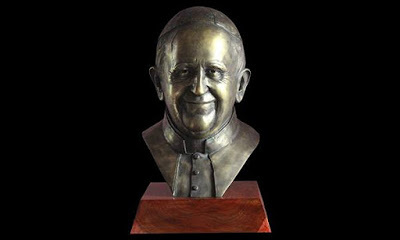
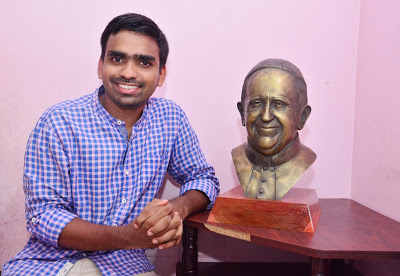
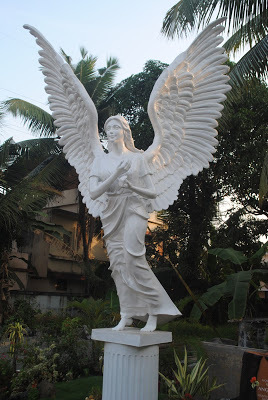 The self-taught sculptor George Francis has made a striking bust of Pope Francis
The self-taught sculptor George Francis has made a striking bust of Pope FrancisPhoto of George Francis by Ratheesh Sundaram
By Shevlin Sebastian
Every now and then, George Francis would read articles on Pope Francis. Sometimes, he would watch him on TV. And gradually, an admiration grew within him.
“There are many Popes who have shied away from difficult subjects, but Pope Francis has always tackled them with courage, including the sexual abuse of children by priests,” says George. “Also, he seemed to be a man of kindness and friendship. I became a fan. One day, there arose a desire in me to do a real-life image of him.”
At his home in Tripunithara, George made a clay model, and, from it, a silicon mould. Then he poured wax on it. After it had dried, he took it to Harikrishnan, a bronzesmith, who lives in Piravom. There, it was wrapped in clay for a week. Thereafter, it was heated.
“When that happens, the clay becomes hard, while the wax melts,” says George. “It was on the clay that the molten bronze is poured.” The end result is a one-foot high bust, which weighs 23 kgs. It is striking how real the Pope looks. “I used sandpaper to polish the model,” says George.
It took six months for George to finish the work because he worked only on the weekends. That's because he is working as a Creative Lead, at Kochi, for a Singapore-based IT company. But when the company came to know about his sculpting skills, they changed his timings. “Now, my office time is from 12 to 9 p.m.,” says George. “Hence, I am able to work on my sculpting from 6 to 11 a.m.”
Sculpting is, indeed, a passion for him. But the Pope is not his first work. While he was studying for his degree in advertising, at the RLV College of Music and Fine Arts, his friend, Vincent Variyath, the parish priest of the St. Sebastian church, at Kochi, asked him to make an angel for the cemetery.
So, George began to think about it. “I felt that the speciality of angels is that they have such large wings,” he says. “So I decided to make a wing span of 14 ft., while the angel has a height of 8 ft.”
George used cement for the body and fibre for the wings. “The angel is standing on his toes, because I wanted people to have a 'wow' feeling,” says George.
And indeed, you do get a wow feeling when you look at the work. And George, too, experienced a wow feeling on the personal front. He would take drawing classes for children at the church. There, he met the Catechism teacher Amritha. They became friends. Soon after, they fell in love. The duo got married two years ago. Amritha has just completed her M. Phil from the Cochin University of Science and Technology.
Interestingly, the impulse to work with his hands came from his own father, who was a mechanic. “I would help my father every now and then,” he says.
Meanwhile, George has an unusual definition of his talent. “I am the medium that allows God's creativity to come through,” he says. “When I made the angel, at one point I fell stuck. But when I continued to work hard, the magic happened, and it all came through well. So, it is not my own skills. I feel I am a tool of God.”
(The New Indian Express, Kochi and Thiruvananthapuram)
Published on August 01, 2016 22:46
July 31, 2016
He Swiped Right Into Our Hearts
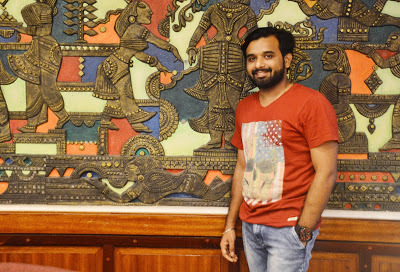
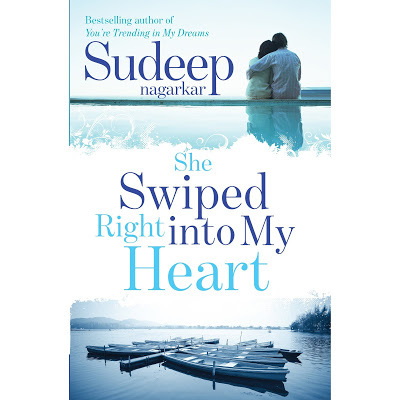 Best-selling author Sudeep Nagarkar talks about his latest novel, as well as his writing career
Best-selling author Sudeep Nagarkar talks about his latest novel, as well as his writing careerPhoto of Sudeep Nagarkar by Ratheesh Sundaram
By Shevlin Sebastian
Sudeep Nagarkar is feeling a bit groggy at mid-morning in Kochi. “That's because I had to get up at 3 a.m., to catch a flight,” says the Mumbai-based author. It is his first visit to the coastal city. But the news from the Penguin-Random House company representative is good.
His seventh and latest novel, 'She Swiped Right Into My Heart', is flying off the shelves. It is not surprising since Sudeep has an easy and engaging style, and readers tend to turn the pages swiftly.
In the novel, one of the lead characters is Geet, a nerdy girl, who gets teased mercilessly in college. The others include the beautiful Shibani, her introverted sister, Tushita, handsome Rudra and the sensitive Vivaan. Some of the themes Sudeep has tackled include friendship, romance, relationship-setbacks, inferiority feelings, and a complex sexuality.
“My books have done well, because it connects with youngsters,” says the 28-year-old. “Though the theme of all seven books is romance, it is not an out-and-out love story. For example, in 'It Started With a Friend Request', I have tried to show, that, in today's Facebook world, we can make friends easily, but, at the same time, there is a chance of getting betrayed.”
But Sudeep's fans have remained steadfast. Sometime ago, an 18-year-old reader, Meeta (name changed), arrived at his home on his birthday, and gave him a gift. It was an eight-feet high calendar plus greeting card, in which Meeta had pasted 350 photos of Sudeep. “She had collected them from Google and my Facebook account,” he says. “It was an amazing gift, which is still hanging in my bedroom.”
Interestingly, he also has fans outside India. “My e-books are selling in Afghanistan, Pakistan, Dubai, Britain, and the US,” he says. “The paperbacks are sold only in India. I believe that one day the western world will accept our style. The major impediment is that romance, for them, remains erotica, while, for us, it is all about emotions. So, when I describe a bedroom scene I tend to portray it with feeling, rather than through technicalities.”
It has been an unlikely career trajectory for Sudeep. He had passed out from the Datta Meghe college of engineering in Navi Mumbai, followed by a MBA from the Welingkar Institute of Management. But problems on the relationship front made him turn to writing. And he discovered that he had a knack for it. Thus far, Sudeep has sold over a million copies, and that gave him the impetus to become a full-time writer in 2013.
Meanwhile, even as he is working on his novels, Sudeep is constantly communicating with his readers through Whatsapp, Facebook and text messages. “Readers want an interaction with the author,” he says. “So, it is important to reply.”
On an average, Sudeep gets about 250 messages daily. He admits that he does get overwhelmed at times. “But, at the same time, it is nice that people are showing appreciation,” he says. “The more you interact, the more you realise the flaws in your writing and you can make changes.”
In his earlier books, Sudeep would put in a lot of Hindi poems. But when people in South India told him they did not understand the language, he stopped using them. “I felt it to be a genuine criticism,” he says. “My aim is to keep improving all the time.”
(Sunday Magazine, The New Indian Express, South India and Delhi)
Published on July 31, 2016 22:32
July 28, 2016
Caught napping!


COLUMN: LOCATION DIARY
Dharmajan Bolgatty talks about his experiences in the films, 'Paappi Appacha', and 'Puthiya Theerangal'
Photos: Dharmajan Bolgatty; the poster of the film, 'Puthiya Theerangal'
By Shevlin Sebastian
When Dharmajan Bolgatty appeared on the sets of 'Paappi Appacha', at Thodupuzha, in September, 2009, he felt nervous. This was his first role in a Mollywood film. He was supposed to play a sidekick of Dileep called Kuttappi. Soon, after he arrived, he acted in a couple of scenes with Dileep.
Thereafter, associate director Biju Arookutty told Dharmajan that he could take a rest. “I wandered around and found there was no place to sit,” he says. “The area was near a dam and there were few facilities.”
After a while, Dharmajan came near two caravans placed next to each other. There was a Tamil boy who looked after them. Since he had seen Dharmajan acting with Dileep, he assumed that the former was a big shot and opened the door. So Dharmajan stepped in.
“It looked so comfortable,” says Dharmajan. “There was a nice bed, a TV as well as a small washroom. After a while I lay down and went off to sleep.”
Outside, debutant director Mamas wanted to change a scene which had been shot earlier. Dharmajan was called for, but they could not find him. They searched everywhere.
Finally, Dileep got tired of waiting. So, he decided to have a rest. However, when he stepped inside, he got a shock: there was Dharmajan lying on his bed. Dileep said, “Dharmajan, you are sleeping peacefully, while everybody is frantically searching for you.”
Dharmajan sat up in shock.
Meanwhile, Dileep stepped outside and shouted, “He is right here.”
The crew members rushed up. “Cameraman Sanjeev Shankar was so angry that I had slept in Dileep's bed he would have sacked me on the spot,” says Dharmajan. “What saved me was that Dileep was not shocked or surprised. I think he was used to my style and liked it.” Soon, the shoot resumed once again.
Meanwhile, Dharmajan had an entirely different experience on the sets of Sathyan Anthikad's 'Puthiya Theerangal' (2012). Along with Dharmajan, veteran actress Molly Kannamaly (popularly known as Molly Chechi) also had a role. During the shoot at Allapuzha, they stayed at the Hotel Regency. While Molly was staying on the ground floor Dharmajan was on the first floor. “Sometimes we had our meals together,” says Dharmajan.
Once when they were doing so, in his room, Dharmajan got a call on his mobile. It was his friend Suresh (name changed), a businessman, who travelled often to Allapuzha. “When he heard that I was in Allapuzha, he said he wanted to come and meet me,” says Dharmajan. “I said, 'No, it may not be right, because I have a woman with me. She is my girlfriend'.”
Suresh threatened that he would inform Dharmajan's wife. So Dharmajan quickly said, “Please don't tell her, but you can come.”
Dharmajan then told Suresh that he might not be in the room because he had to go for an urgent discussion in [fellow actor] Unni Mukundan's room. But Dharmajan said, “You can come and enjoy. I will leave the door unlocked.” Suresh quickly took the room number from Dharmajan.
Then Dharmajan told Molly Chechi to cover herself with the sheet and lie on the bed. Once she did so, he stepped out and hid further down the corridor. “After a while, I saw Suresh come quietly, like a thief,” says Dharmajan. “He came and stood in front of the room, looked quickly to the left and right. And then he slowly opened the door and went in. For a a few moments there was a complete silence. Molly Chechi told me later that Suresh slowly removed the sheet from her face. But when he saw that it was an old woman, Suresh let out a string of abuses and left the room in a hurry.”
(The New Indian Express, Kochi, Thiruvananthapuram and Kozhikode)
Published on July 28, 2016 01:00
July 26, 2016
“Israel is in a deep crisis”
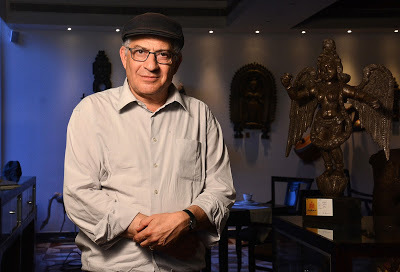
Scholar Prof. Amnon Raz-Krakotzkin talks about his country, while on a recent visit to Kochi
Photo by Ratheesh Sundaram
By Shevlin Sebastian
When Prof. Amnon Raz-Krakotzkin of Israel was told that a visitor had come to meet him, he said, “Please, let it be at the end of the talk. This is so interesting.”
Amnon had come to participate in the annual conference on metaphysics and politics conducted by the Backwaters Collective at Kochi. Later, he says, “There is so much to learn from Kerala. Different traditions and identities are co-existing, in the same space, with a lot of respect for each other. I am wondering whether this model can be replicated in other places. In Israel, we need to find a different language, so that people can learn to live together.”
Unfortunately, that is not happening, at present. And the professor, who was the former chair in the department of Jewish history at Ben Gurion University, does not mince his words: “Israeli society has become more and more nationalistic, and anti-Arab. The government [run by Prime Minister Benyamin Netanyahu] is continuing the process of land confiscation in the West Bank and the closure of the Gaza strip. At the same time, the attitude towards the Arab citizens of Israel has become worse.”
So intense is the Professor that, at one point, with a wave of his hands, he almost sends flying the digital recorder which I hold in my hand.
Meanwhile, Amnon continues in the same vein. “Israel is a colonial power which denies the rights of the Palestinians,” he says. “The question of why we Jews are perpetrating the same suffering which we have suffered at the hands of others throughout our history is a big mystery. But my belief is that if you establish a country [Israel] for victims of persecution, you should be able to understand the plight of victims in other places.”
One reason for the lack of understanding is because Israelis are in a state of fear. “They feel they are surrounded by enemies in the Middle East and don’t know how to protect themselves,” says Amnon.
What is exacerbating matters is the random violence that Israelis are experiencing at the hands of individual Palestinians in their own cities. “On any given day, a 13-year-old Palestinian can pull out a knife and kill somebody,” says Amnon. “These boys have no hope, no education and nothing to look forward to. Every day, they see their parents being humiliated at the check-posts. And so, they are taking revenge. They know that they will be shot, but they don't care.”
Things have come to such a pass, because, for the past ten years, the entire country has been in the grip of right-wing forces. “There is hardly any opposition,” says Amnon. “The left also proclaims separation from the Palestinians and not reconciliation, based on equality and justice. They would like to get rid of the Palestinians because they are keen to maintain the Jewish demographic majority.”
Not surprisingly, Amnon, with his radical views, is in a tiny minority in Israel. “Yes, I am well-known as a pro-Palestinian Israeli,” he says. “In principle, I agree with most of the Palestinian demands. I want total equality between the Jews and Arabs. In the sense I also feel that the Israelis should also have rights in any peace deal.”
For all this to happen, a new leader has to emerge. “He should be someone who will talk a new language of equality, individuality and national equality, which is not there in Israel now,” says Amnon. “There are a few Arab-Jewish groups who are talking about it, but they are not loud enough and do not have any power.”
(The New Indian Express, Kochi and Thiruvananthapuram)
Published on July 26, 2016 22:26
July 24, 2016
A Graceful Sunset
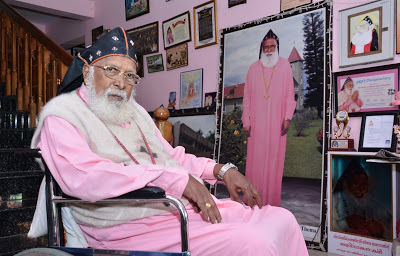 Dr. Philipose Mar Chrysostom, at 98, is the oldest living Bishop in the world. He looks back on his life
Dr. Philipose Mar Chrysostom, at 98, is the oldest living Bishop in the world. He looks back on his lifePhoto by Ratheesh Sundaram
By Shevlin Sebastian
When Dr Philipose Mar Chrysostom Mar Thoma Valiya Metropolotan comes into his office at Maramon (102 kms from Kochi), on a July morning, it is difficult to believe that he has completed 98 years of age on April 27. His face is unlined, the smile pleasant, and the eyes are twinkling.
Suddenly, I notice the voting mark on his left forefinger, thanks to the state elections held in May. “I have voted in several State and Lok Sabha elections,” says Mar Chrysostom.
But he remembers that the candidates whom he voted for during the first three Assembly elections lost. “When the fourth election came up, the Communists told me, ‘As a Christian you will never vote for us atheists',” says Mar Chrysostom. “So, can you stay away from the voting?'”
But Mar Chrysostom reminded them of the defeats of the earlier candidates, all of them Congressmen. So the Communists said, “Okay, then, can you vote for the Congress again?”
Mar Chrysostom did so. “Unfortunately for the Communists, the Congressman won,” says the Bishop, with a smile.
The oldest living Bishop in the world is famed among Malayalis for his witty sermons and speeches. And he has a specific reason for opting to use humour. “There is no need to be more serious than necessary,” says Mar Chrysostom. “I realised that when I used humour, people regarded me as a friend and felt free to come and talk to me.”
One who did so is superstar Mammooty. At a June 21 public function, held at Kochi, to felicitate the bishop on his advanced age, Mammooty said, “I regard the Bishop as a close friend, who gives me advice on how to lead a meaningful life.”
Meanwhile, underneath the laid-back style, Mar Chrysostom is deeply dedicated to his vocation. And the seeds were planted early in him.
His father, the Very Rev. K. E. Oommen was a priest and became the Vicar General (the highest position among priests). "Right from childhood, because of my parents’ influence, I was committed to the church and God," says Mar Chrysostom.
After his theological studies, Mar Chrysostom became a priest in 1944 and a bishop on May 23, 1953. On October 23, 1999, he was appointed as the supreme head of the Mar Thoma Church. But, in 2007, Mar Chrysostom relinquished his post. Today he is the Mar Thoma Valiya Metropolitan, and continues to travel extensively and give speeches.
Sometimes, he delves into his childhood memories. Once, when he was seven years old, he had gone with his mother to have a bath in the Maramon river. But his mother slipped and fell on the slushy bank. “My mother was very bulky,” says Mar Chrysostom. “So it looked very funny. I started laughing loudly.”
Neighbour Mathew, who was returning from the market, heard the laughter and stopped. “That was when he saw my mother,” says Mar Chrysostom. “So he helped her get up. Later, my mother got upset that he had seen that she had fallen. But I told her, 'Who else could have picked you up? Thank God I laughed. Otherwise, Mathew chettan [elder brother] would not have come'.”
(Sunday Magazine, The New Indian Express, South India and Delhi)
Published on July 24, 2016 22:53
July 19, 2016
Shooting On An Island
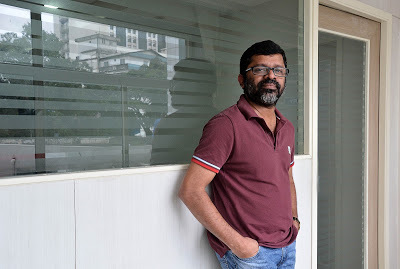
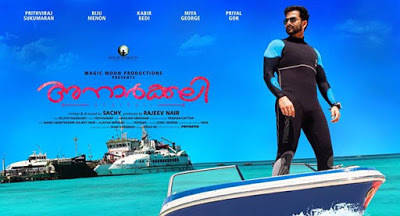 COLUMN: LOCATION DIARY
COLUMN: LOCATION DIARY Director Sachy talks about his experiences in his debut hit film, 'Anarkali'
Photos: Director Sachy by Ratheesh Sundaram; the poster of 'Anarkali'
By Shevlin Sebastian
As director Sachy was about to embark, on a ship, in February, 2015, with the actors and crew of the film, 'Anarkali', for the Lakshadweep Islands, he got a shocking news. The permission to shoot scenes at the islands of Agati, Kavaratti, Bangaram, and Thinnakara had been withdrawn by the island's administrator Rajesh Prasad.
A group called the Sunni Students' Federation had submitted a petition to the Administrator, signed by the Imam of the local mosque, stating that cinema is unIslamic. “I was informed that if shooting commenced, there would be communal problems,” says Sachy.
The director kept calm. “If I told [the actors] Prithviraj, Biju Menon, Priyal Gor, and Miya George about this problem, they would immediately set out for their next films,” says Sachy. So he kept quiet and had a discussion with producer Rajeev Nair and production controller Roshan Chittoor.
The team was supposed to arrive at Kavaratti the next day. But Sachy needed more time to get the order reversed. So he persuaded the captain to change the direction of the ship's journey. The boat would now touch the islands of Bitra, Kiltan and other islands and would reach Kavaratti the day after.
Again, through an influential contact, Sachy was able to inform a senior official of the ministry of external affairs. The official immediately asked the administrator to come to Delhi. So, Rajesh flew by helicopter from Kavaratti to Kochi and then took a flight to Delhi.
While there, the official told Rajesh, “If Lakshadweep is a part of India, then the film shoot will have to take place there, at all costs.” Rajesh cited a possible law-and-order problem and said that he did not have the necessary forces to control the unrest. “We will send central forces,” the official said firmly. Rajesh nodded and flew back. As soon as he reached Kavaratti, Rajesh issued the permission certificate.
Meanwhile, Sachy felt a tension within him as the ship approached the embarkation jetty at Kavaratti. There were 2000 people present, but he was not sure whether they were friendly or antagonistic. “But when we stepped out, they gave us green coconuts to drink, to show their happiness at seeing us,” says Sachy. “I felt so relieved. It became clear that the the majority were in support of us. Later, whereever we had shooting stints, the locals would provide us with food. They were so kind and generous.”
However, when Sachy wanted to do a crowd scene, he faced opposition. The islanders are followers of Islam. “They said that women were not supposed to appear in front of the camera,” says Sachy. “My problem was that I could not show an audience that consisted of only men.”
So Sachy requested the local doctors and engineers to bring their families. That evening, an announcer went around the island in an autorickshaw and announced a performance by Jayaraj Warrier, who was playing Chettuva Shah Jahan, a Mappilapattu singer, in the film. Jayaraj would lip-sync a song called 'Aa Oruthi Avaloruthi', which was sung by Vineeth Sreenivasan and Manjari.
Sachy kept his fingers crossed. But, at the appointed time, a crowd of men, women and children appeared. They listened to the song avidly. “We shot the reactions and the clapping,” says the director, who used three cameras as well as a helicam. “After the song was over, we played it again. Again they clapped. When the third time it happened, people began to drift away. So, we begged a few of them to stay on. That was how we managed to shoot the song.”
Sachy smiles and says, “After all these difficulties, I was so relieved when the film became a bumper hit.”
(The New Indian Express, Kochi, Kozhikode and Thiruvananthapuram)
Published on July 19, 2016 23:29
July 18, 2016
Straddling Two Continents
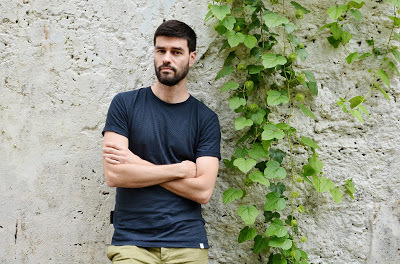 Colombian artist Pedro Gómez-Egaña talks about his first impressions of Kochi, as well as his art and life in Norway
Colombian artist Pedro Gómez-Egaña talks about his first impressions of Kochi, as well as his art and life in NorwayPhoto by Ratheesh Sundaram
By Shevlin Sebastian
A day after his arrival in Kochi, recently, Colombian artist Pedro Gómez-Egaña, has a dazed look on his face. “There are so many impressions,” says the Norway-based artist, on his first visit to Kerala. “It is going to take me a while to assimilate it.”
But he is much taken up by the dynamism of the city. “Kochi has a particular rhythm,” he says. “By rhythm, I mean, the intensity with which people interact with each other. Like the way they navigate the traffic. The pedestrian rhythm is slow and relaxed and the people walk with a beautiful confidence. The traffic, on the other hand, is frenetic. Although people told me it is aggressive, I did not find it so. There seems to be an interwoven communication between the pedestrians and the car and bus drivers.”
Pedro is one among the ‘First 25’ artists who have been announced as participants for the third Kochi Biennale, which runs from December 12, 2016 to March 29, 2017.
His work is a mix of installation and performance-based works. One striking work is called 'The Chariot of Greenwich'. It is a wooden contraption, with two large wheels, and several gears and was inspired by the Chinese.
“The Chinese built this chariot in 2600 BC,” says Pedro. “It has a complex set of gears and was built in such a way that an arrow always pointed to the South. And it always moved around in a circle. We are also moving, but, many times, it seems to be in circles.”
Like the Chinese chariot, all inventions have their pluses and minuses. “According to French philosopher Paul Virilio, when you invent the ship, you invent the shipwreck,” he says.
“When you invent the plane, you invent the plane crash. And when you invent electricity, you invent electrocution. Every technology has its own negativity.”
Meanwhile, when asked about his life in Bergen, Norway, Pedro says, “A part of me resonates very strongly with Norwegians. I feel at home. They have a romantic streak. That is very Latin American. They also believe in contemplation and solitude and have a beautiful relationship to light and darkness.”
This darkness lasts for six months. Not surprisingly, Pedro, from sunny Colombia, misses the sunlight. “Even if my brain does not feel it, my body does,” he says. “My doctor said that since I was born in the tropics, it will get worse every year. I try to go away. Or I have to take Vitamin D tablets, fish oil and lie under sun lamps. But it is still very tough. The nice thing is that everybody is depressed. And there is a collective agreement that we are going to be moody for the next six months.”
Despite this, Pedro has been working steadily. His works have been shown at the Performa 13 at New York, the Bergen Assembly Triennale, La Kunsthalle in France, the Brussels and Marrakech Biennials, and the Colomboscope in Sri Lanka.
Since he is a frequent international traveller, he is well-placed to identify the global trends in society. “The media is the most powerful force in the world today,” he says. “However, for the first time in history, we not only consume news, but we produce it on our own and share it. As a result, life is being constantly interrupted by SMS messages, Facebook and Whatsapp texts. There is a saturation of information. So, people are in a constant state of distraction. They are unable to engage with anything deeply. It is affecting the brain, relationships and our perception of time.”
(Published in The New Indian Express, Kochi and Thiruvananthapuram)
Published on July 18, 2016 23:59
July 13, 2016
Playing A TV Journalist
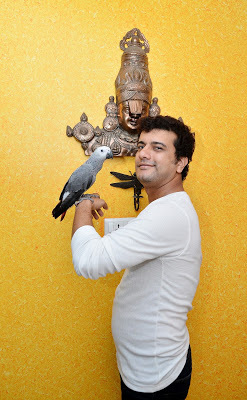
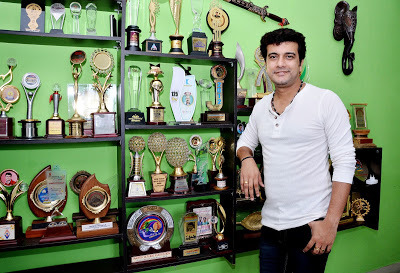 COLUMN: LOCATION DIARY
COLUMN: LOCATION DIARY Photos by Ratheesh Sundaram
By Shevlin Sebastian (Published in The New Indian Express, Kochi, Thiruvananthapuram and Kozhikode)
Published on July 13, 2016 22:57
July 12, 2016
Double View
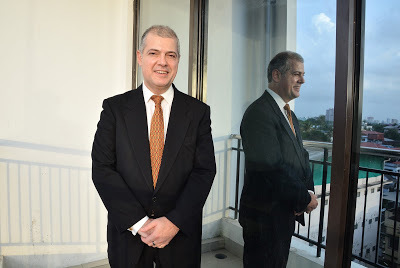 On a recent visit to Kochi, Bertrand de Hartingh, the Cultural Counsellor of the French Embassy, talks about a host of subjects regarding India and France
On a recent visit to Kochi, Bertrand de Hartingh, the Cultural Counsellor of the French Embassy, talks about a host of subjects regarding India and FrancePhoto by Ratheesh Sundaram
By Shevlin Sebastian
At 5.30 p.m., on a Tuesday, last month, Bertrand de Hartingh, the Cultural Counsellor of the French Embassy at Delhi was about to stride into the Chavara Cultural Centre in Kochi. But he stopped suddenly because a group of chenda players were giving a spirited performance. This was part of the celebrations of the opening of the new Annexe of the Alliance Francaise.
The annexe is a spacious set-up with a hall and several large rooms. Posters of various images of France hung on the walls. “The opening of the annex at its own premises in Kochi is one of the biggest achievements of the past few years,” says Alice Gauny, the director of the Alliance Francaise of Thiruvananthapuram. “From now on we have a space in which we can teach, organise events, and develop partnerships and activities.”
Bertrand nods as he cuts the ribbon and lavishes praise on Alice. Just four months into his new assignment, Bertrand has already fallen in love with India. “I have been charmed by the intelligence and the dynamism of the people, and their readiness to have a look at everything, with open eyes,” he says. “I immediately felt that India is a place where I can learn a lot.”
He is also fascinated by Kerala. “It is a complex state,” says Bertrand. “Kerala has the highest rates for education, a low child mortality rate, and many other achievements. On the other hand, when you travel across Kerala, you can see garbage here and there. And then you think, 'How can such an obviously intelligent people allow this?'”
But Bertrand says France and Kerala are similar. “In both places, people like to laugh, tell jokes, read, have chats, enjoy nature and the arts. Both have a heritage which has lasted for hundreds of years.”
Asked about his work profile, Bertrand says, “My job is to meet and convince people, be it a professor, student, researcher, activist, or media person, that France can be a partner. During my Kochi visit I met Kerala University officials and had discussions on setting up partnerships for vocational training and higher education and businesses.”
There are more than one thousand French businesses in India. These include famous companies like L'Oreal and Schneider Electric. “They have thousands of employees, who make products for the Indian and world market,” says Bertrand. “We believe that by walking along with India in their development journey it will be good for the world.”
But all is not good inside France. It has been hit by a spate of terrorist attacks. “The mood in France is that the people want to heal,” says Bertrand. “Let's go on with what we are. We want to have our democracy the way it has always been.”
However, there is a feeling that there is a rising anti-Muslim bias. But Bertrand says, “I don’t think so. During the attacks at Paris in January, one of the victims was a Muslim policeman. These people use the name of Islam, but they kill everybody. They negate the human value. A lot of French Muslims are horrified by what has happened.”
Yet, despite that, there is an increase in popularity of the Far-Right parties like the National Front. While Bertrand acknowledges it, he says, “All around the world there is a tussle between nationalism and globalism. When people are confident and the economy is doing well, they go for globalism. But if there is a financial crisis, and people become afraid, then they will opt for nationalism.”
(The New Indian Express, Kochi and Thiruvananthapuram)
Published on July 12, 2016 23:10



